Structurist Relief No. 18-II 1958–60
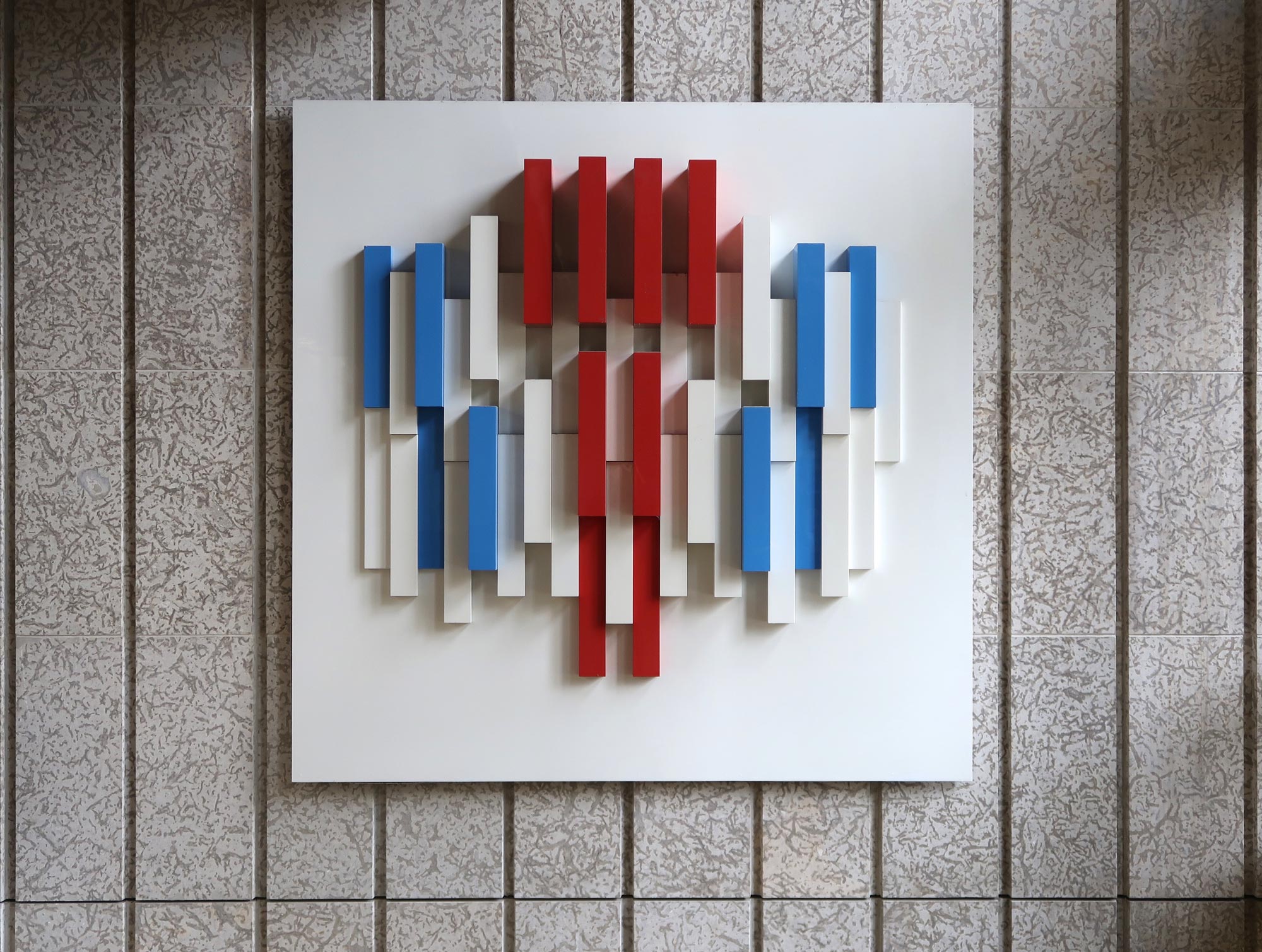
Eli Bornstein, Structurist Relief No. 18-II, 1958–60
Birchwood blocks on aluminum panel over wood panel, painted with acrylic urethane enamel, 259 x 259 x 22.9 cm
University of Saskatchewan, Saskatoon
In 1957, within a year of completing Aluminum Construction (Tree of Knowledge), Bornstein, who in the meantime had established contact with the American relief artist Charles Biederman (1906–2004), abandoned abstracting from nature to begin to construct reliefs using pure rectilinear geometric forms and primary colours. Structurist Relief No. 18-II is the most monumental of his early Structurist reliefs, as he would call them. The work was originally designed for the lobby of the Arts and Science Building, University of Saskatchewan, in Saskatoon, and subsequently moved to the entrance of the Murray Library.
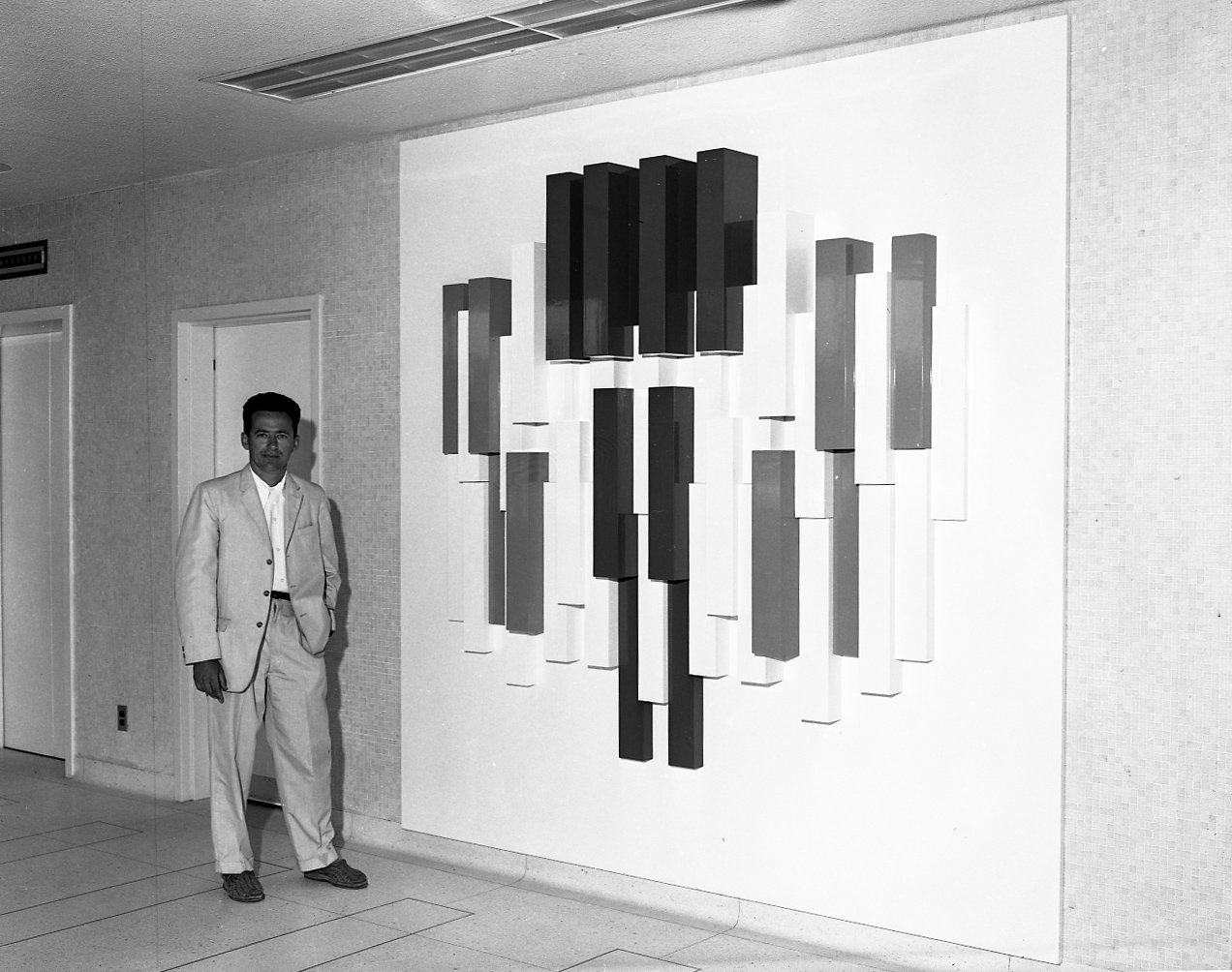
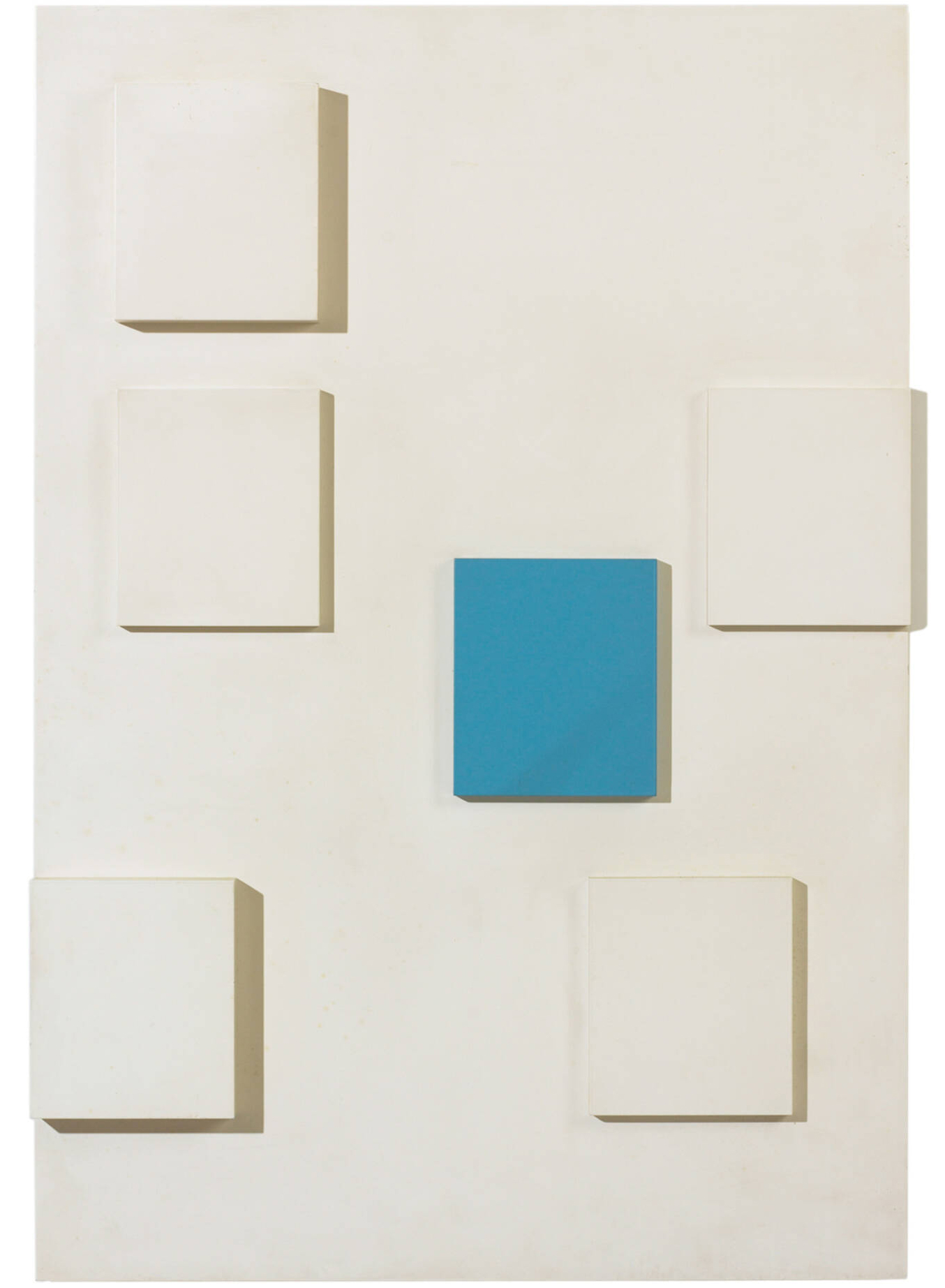
At this point in his career, Bornstein chose to work in three dimensions as opposed to flat painting. While the latter is fixed and viewed from a frontal position, the appearance of the relief, its individual parts, shifts as the viewer’s eye and body change position. Rather than being static pictures, Bornstein’s reliefs exist as real objects, like chairs or tables, for example, inhabiting with us the same physical space and environment.
Structurist Relief No. 18-II heftily embodies the principles of Dutch painter Piet Mondrian (1872–1944), including his decision to limit his palette to primary colours, but Bornstein significantly repurposes them to relief construction. He first revealed his interest in Mondrian in the free-floating rectangles of colour in The Island, 1956.
Another influence that informs this work came during Bornstein’s 1957 to 1958 sabbatical leave when he travelled in Europe and the U.K., where his main purpose was to study the work of the Russian Constructivists in addition to Mondrian and the De Stijl movement. During the trip, he also made his own first modest and austere relief works, like Structurist Relief No. 4, 1957, from which the grander Structurist Relief No. 18-II would soon evolve. Structurist Relief No. 4 is constructed of several squarish white rectangles on a white ground, with the exception of one dazzlingly blue one. The squares have slightly different depths, as we can tell by the shadows they cast, and they are distributed so that they animate the entire ground.
Bornstein’s earliest reliefs, like Structurist Relief No. 4, were relatively simple, but, as his experience developed, the reliefs became more elaborate. Thus Structurist Relief No. 18-II is invasive: it is crisp and elegant, with the scale and presence to hold a public space. Its composition is centred and symmetrical, its relief elements deep and weighty, its colours, in addition to white, confined to two primaries: blue and red. Again, it is in its way austere, but its varied relief masses and its dispersal of bright colours perform with muscular jazzy rhythms.

 About the Author
About the Author
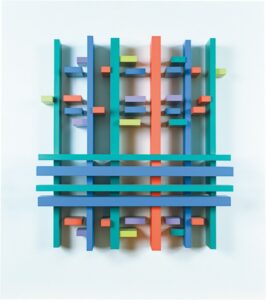 More Online Art Books
More Online Art Books
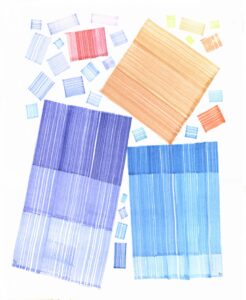 Acknowledgements
Acknowledgements